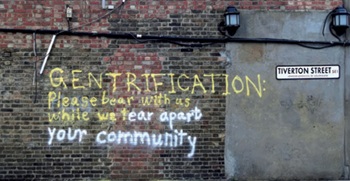Hydrogeological Impact Appraisal HIA
A hydrogeological impact appraisal (HIA) is a methodology designed to fit into the Environment Agency’s abstraction licensing process, including the changes brought about by the Water Act 2003. It also fits within the Environment Agency's overall approach to environmental risk assessment and can be matched to the risk of environmental impact associated with dewatering.
The HIA should include a conceptual understanding of the groundwater system and a survey to identify water-related features that could be affected by the dewatering e.g. water supply boreholes, rivers and protected sites. The assessment is backed up by calculations of the dewatering rates and the predicted impact (groundwater level drawdown) on nearby water features. A tiered approach is taken, with the level of detail, time and cost depending on the sensitivity of the site (presence or absence of rivers, protected sites etc.) and the scale of dewatering.
For sites where high dewatering rates are needed and/or in sensitive areas, the HIA may require extensive ground investigation, water features survey(s), pumping test(s) and stream/spring monitoring. This is likely to take several months. Once the HIA is completed and submitted, the regulator has up to four months to assess the application.
Additional guidance on HIAs is available through the Environment Agency.
[edit] Related articles on Designing Buildings
- Dewatering construction sites.
- Environment Agency.
- Environmental impact assessment EIA.
- Groundwater.
- Groundwater control.
- Hydrogeology.
- Raising awareness of dewatering regulation.
- Water abstraction licence.
- Water impoundment licence.
[edit] External resources
Featured articles and news
A threat to the creativity that makes London special.
How can digital twins boost profitability within construction?
The smart construction dashboard, as-built data and site changes forming an accurate digital twin.
Unlocking surplus public defence land and more to speed up the delivery of housing.
The Planning and Infrastructure bill oulined
With reactions from IHBC and others on its potential impacts.
Farnborough College Unveils its Half-house for Sustainable Construction Training.
Spring Statement 2025 with reactions from industry
Confirming previously announced funding, and welfare changes amid adjusted growth forecast.
Scottish Government responds to Grenfell report
As fund for unsafe cladding assessments is launched.
CLC and BSR process map for HRB approvals
One of the initial outputs of their weekly BSR meetings.
Architects Academy at an insulation manufacturing facility
Programme of technical engagement for aspiring designers.
Building Safety Levy technical consultation response
Details of the planned levy now due in 2026.
Great British Energy install solar on school and NHS sites
200 schools and 200 NHS sites to get solar systems, as first project of the newly formed government initiative.
600 million for 60,000 more skilled construction workers
Announced by Treasury ahead of the Spring Statement.
The restoration of the novelist’s birthplace in Eastwood.
Life Critical Fire Safety External Wall System LCFS EWS
Breaking down what is meant by this now often used term.
PAC report on the Remediation of Dangerous Cladding
Recommendations on workforce, transparency, support, insurance, funding, fraud and mismanagement.
New towns, expanded settlements and housing delivery
Modular inquiry asks if new towns and expanded settlements are an effective means of delivering housing.






















